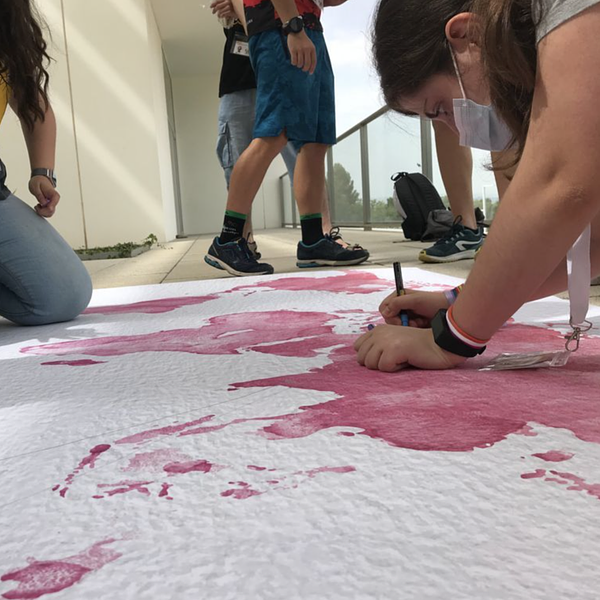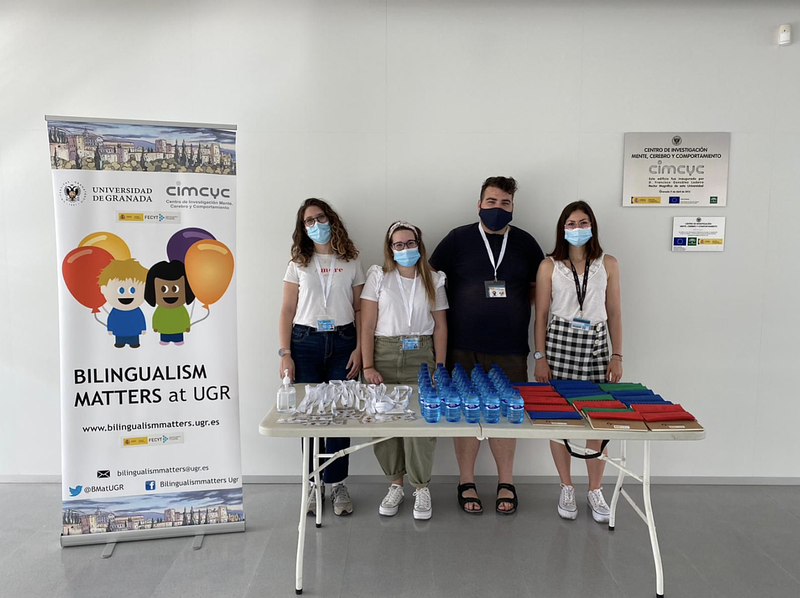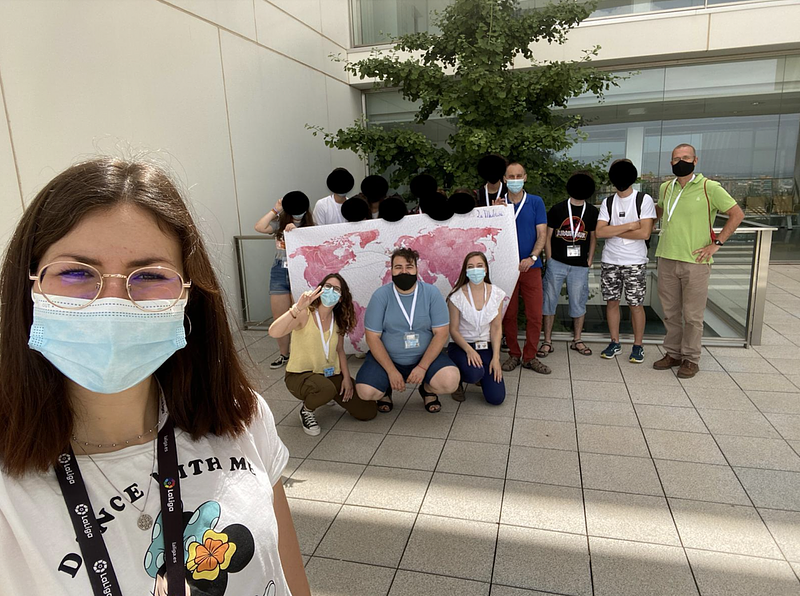
2021-06-22
Our Bilingualism Matters team opened the doors to our laboratory to give high schoolers a glimpse into the life of a researcher.
Last Tuesday and Wednesday, the 15th and 16th of June, our BM team (Marta Rivera, Antonio Iniesta, Cristina López-Rojas, Marta Reyes, and Melodie Bellegarda) had the pleasure of receiving two groups of 10th grade students from La Madraza High School (Granada) in our research center. This open house event at the Mind, Brain and Behavior Research Center (CIMCYC) was carried out within the project “How do languages co-exist in the brain? Relaying evidence from the laboratory to our society“, funded by the Spanish Foundation of Science and Technology and the Ministry of Science and Innovation (FCT-19-15358).
The conference was aimed at students in their second year of high school with the objective of presenting the scientific field as a place for future job opportunities, disseminating the most relevant scientific findings on the subject of bilingualism, and showing the techniques used in neuroscience to study this phenomenon.
To kick off the event, the researchers gave a small research kit to each person attending (notebook and pen, identification card and water). The group was divided into two subgroups to respect the security and capacity measures imposed due to COVID-19. First, we gave a brief presentation to introduce the scientific method and make the role of women in science visible. We also took the opportunity to provide career guidance and present the research as a possible career option. Then, we got into the main topic: bilingualism. Some questions we wanted to answer with our interventions were: What does it mean to be bilingual? Why is bilingualism important? How do we study this phenomenon from a neuroscientific point of view? To answer these questions, we adapted simple laboratory tasks in our presentation – a dictation task and a naming task – to illustrate the phenomena of facilitation and interference in cognate words and the inhibition effect between languages. To conclude this first talk, we debunked some classic myths about bilingualism.
Afterwards, we had a small breakfast outdoors while the students visited the laboratories in groups of three. There, they were able to see firsthand two of the techniques we use in our laboratory. For the Eye-tracking technique, we recreated an experimental session with Eye-Tracking, calibrating the gaze with the camera and performing some test trials. Regarding electroencephalography (EEG), we showed the EEG caps and explained the fitting process. On the computer, the students saw a recording of brain activity from a past experiment.
During breakfast, the students were able to mark on a world map mural the countries they had visited or languages they knew; and, the countries they would like to visit or languages they would like to learn. Later, we joined all the points on the map to recreate the functional connectivity networks that take place in our brain. Without a doubt, it was an enriching meeting in which we exposed the rigor of the scientific method and the importance of applying it in the field of bilingualism, we defended the role of women in science as well as the presence of minority languages.

